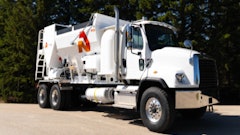
Tolerance compatibility between concrete and other building components that interface with it has been a costly problem because of the cost of remedial work and the negative effect on schedule. At the root of the problem are varying dimensional tolerances for concrete members and for concrete and the abutting components—whether anchor bolts or other building components.
Tolerance conflicts for anchor bolts in 2004
The American Society of Concrete Contractors (ASCC) developed Position Statement No. 14 “Anchor Bolt Tolerances” that was published in ACI’s Concrete International in February 2004. In that document, ASCC recommended the following anchor bolt location tolerances:
- 3/4- and 7/8-in.-diameter bolts: ±1/4 in.
- 1-, 1-1/4-, and 1-1/2-in.-diameter bolts: ±3/8 in.; and
- 1-3/4, 2-, and 2-1/2-in.-diameter bolts: ±1/2 in.
At that time, the American Institute for Steel Construction (AISC) had anchor rod (same definition as anchor bolt) tolerances in their AISC 303 “Code of Standard Practice for Steel Buildings and Bridges”. AISC required that the variation in location of anchor rods from the dimensions shown in the Embedment Drawings shall be as follows:
(a) The variation in dimension between the centers of any two Anchor Rods within an Anchor-Rod Group shall be equal to or less than 1/8 in.
(b) The variation in dimension between the centers of adjacent Anchor-Rod Groups shall be equal to or less than 1/4 in.
(c) The variation in elevation of the tops of Anchor Rods shall be equal to or less than plus or minus 1/2 in.
(d) The accumulated variation in dimension between centers of Anchor-Rod Groups along the Column Line through multiple Anchor-Rod Groups shall be equal to or less than 1/4 in. per 100 ft, but not to exceed a total of 1 in.
(e) The variation in dimension from the center of any Anchor-Rod Group to the Column Line through that group shall be equal to or less than 1/4 in.
The American Concrete Institute’s “Specifications for Tolerances for Concrete Construction and Materials (ACI 117-90)” did not include specific tolerances for anchor bolts but contained the following tolerance for embedded items that was deemed to apply to anchor bolts:
- Vertical alignment, lateral alignment, and level alignment . . . 1 in.
It was difficult to understand how a bolt could be out of tolerance by one-inch and still fit in the baseplate holes. So the ACI embedded item tolerances for anchor bolts was considered suspect. However, it was also difficult to understand how a bolt could be surveyed and placed to ± 1/16 inch. So the AISC anchor rod tolerances were considered suspect as well.
The proposed tolerances varied from ± 1/16 inch (AISC) to ± 1 inch (ACI), with ASCC taking the middle ground. This spread in extreme values was too large and resulted in many jobsite problems and disputes.
The Search for a Solution to the Problem
Bruce Suprenant published an article in Concrete International (January 2005) illustrating the anchor bolt tolerance incompatibility problem. In February 2005, ASCC hosted an Inter-Industry Workshop on Reducing the Cost of Tolerance Incompatibility. Representatives for ASCC, AISC, and ACI attended and contributed to the resulting Summary Report. A task group in ACI Committee 117 began work on a “Guide for Tolerance Compatibility in Concrete Construction” that was published as ACI 117.1R-14 in 2014. It is of note to mention that a member of AISC was a voting member on ACI 117. ACI 117.1R-14 suggested oversizing holes by varying amounts dependent on the anchor bolt diameter, but still didn’t deal with the discrepancy in separate location tolerances published by ACI and AISC.
The separate tolerances meant concrete contractors searched Division 3 for their contractual tolerance specification. Division 3 referred to ACI 117. And the steel erectors would look to Division 5 for their contractual specification which would be AISC 303. This caused many general contractors and construction managers to throw up their hands in despair when base plates didn’t fit over installed anchor bolts.
A Cooperative Industry Solution
But the despair eventually changed to excitement. By 2006, ACI 117 had included specific anchor bolt location tolerances and chose to use those proposed by ASCC. These anchor bolt tolerances were re-approved in 2015. And the good news is, in 2016, AISC 303 chose to use the original anchor bolt tolerances proposed by ASCC and adopted by ACI 117. Finally, the anchor bolt or rod tolerances are now the same in the key construction industry documents.
The Lessons Learned
- Communication among members of all organizations involved in any way with concrete construction tolerances is needed to start solving mutual problems.
- The solution to these problems takes time—12 years in the case of anchor bolts.
- Because solutions take time, perseverance and patience are needed. Don’t give up.
And a Final Word
Even now that anchor bolt tolerances are finally consistent within industry groups, out-of-tolerance situations will still occur. Just not as often. Several publications (for instance, “Common Steel Erection Problems and Suggested Solutions” by James J. Putkey, Steel Tips, December 1993) of AISC give steel erectors advice on handling these situations. Concrete contractors can study these publications to be part of the solution.
Ed. Note: The ASCC documents cited can be viewed at ascconline.org
ACI documents cited can be purchased at concrete.org
AISC documents cited can be purchased at aisc.org

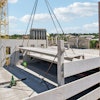

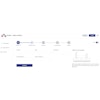

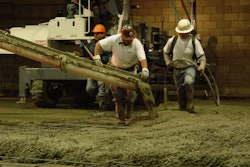

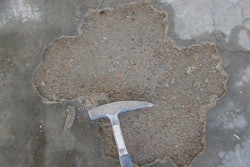





![Fcp Racatac Chair 10893876[1]](https://img.forconstructionpros.com/mindful/acbm/workspaces/default/uploads/2025/10/fcp-racatac-chair-108938761.10l0At5WXv.png?ar=16%3A9&auto=format%2Ccompress&bg=fff&fill-color=fff&fit=fill&h=135&q=70&w=240)





